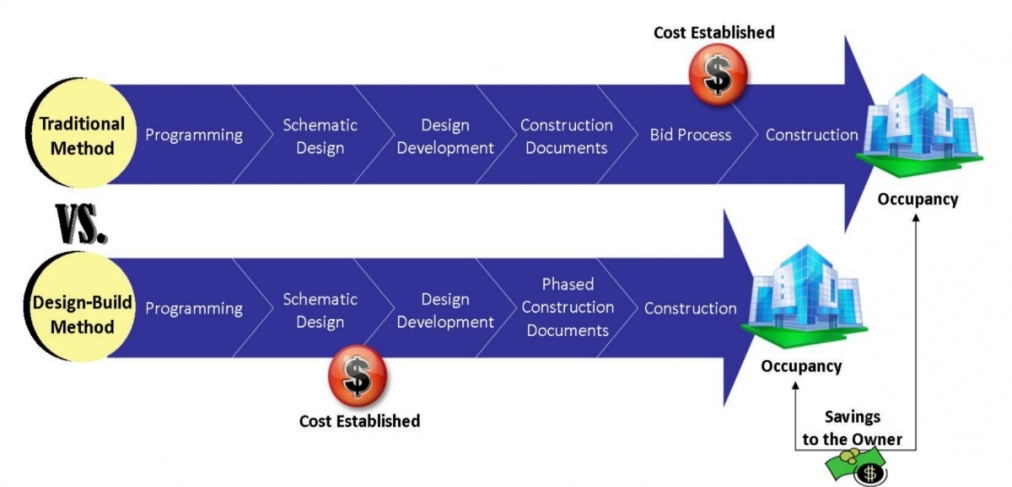Kenron has long been and continues to be an active supporter of the design-build process. The Kenron team is quite knowledgeable and experienced in this process. We have seen first hand the many benefits and positive results with using this method in our projects. Some benefits that our customers have enjoyed include improved quality and project performance; cost and time savings through collaboration and team communication; improved risk management and early knowledge of firm costs, to name just a few.
Kenron has happily shared our knowledge and experience of design-build with the community through seminars and presentations, independently and through the Upstate Chapter of DBIA (Design Build Institute of America).
Our president, Ron Maier, currently serves on the board of the Upstate New York Chapter of DBIA.
What is Design Build
Design-build is a method of project delivery in which one entity – the design-build team – works under a single contract with the project owner to provide design and construction services. One entity, one contract, one unified flow of work from initial concept through completion. Design-build is also known as design/construct and single-source responsibility. Across the country and around the world, design-build successfully delivers office buildings, schools, stadiums, transportation and water infrastructure projects with superior results.
Design-build is an alternative to design-bid-build. Under the latter approach, design and construction are split – separate entities, separate contracts, separate work.
Design-build, design-bid-build and construction management are the three project delivery systems most commonly employed in North America. Over the past 15 years, use of design-build has greatly accelerated in the United States, making this delivery method one of the most significant trends in design and construction today.
One Contract, One Integrated Team
Design-build streamlines project delivery through a single contract between the owner and the design-build team. This simple but fundamental difference saves money and time by transforming the relationship between designers and builders into an alliance which fosters collaboration and teamwork. United from the outset of every project, an integrated team readily incorporates BIM and LEED certification goals.

